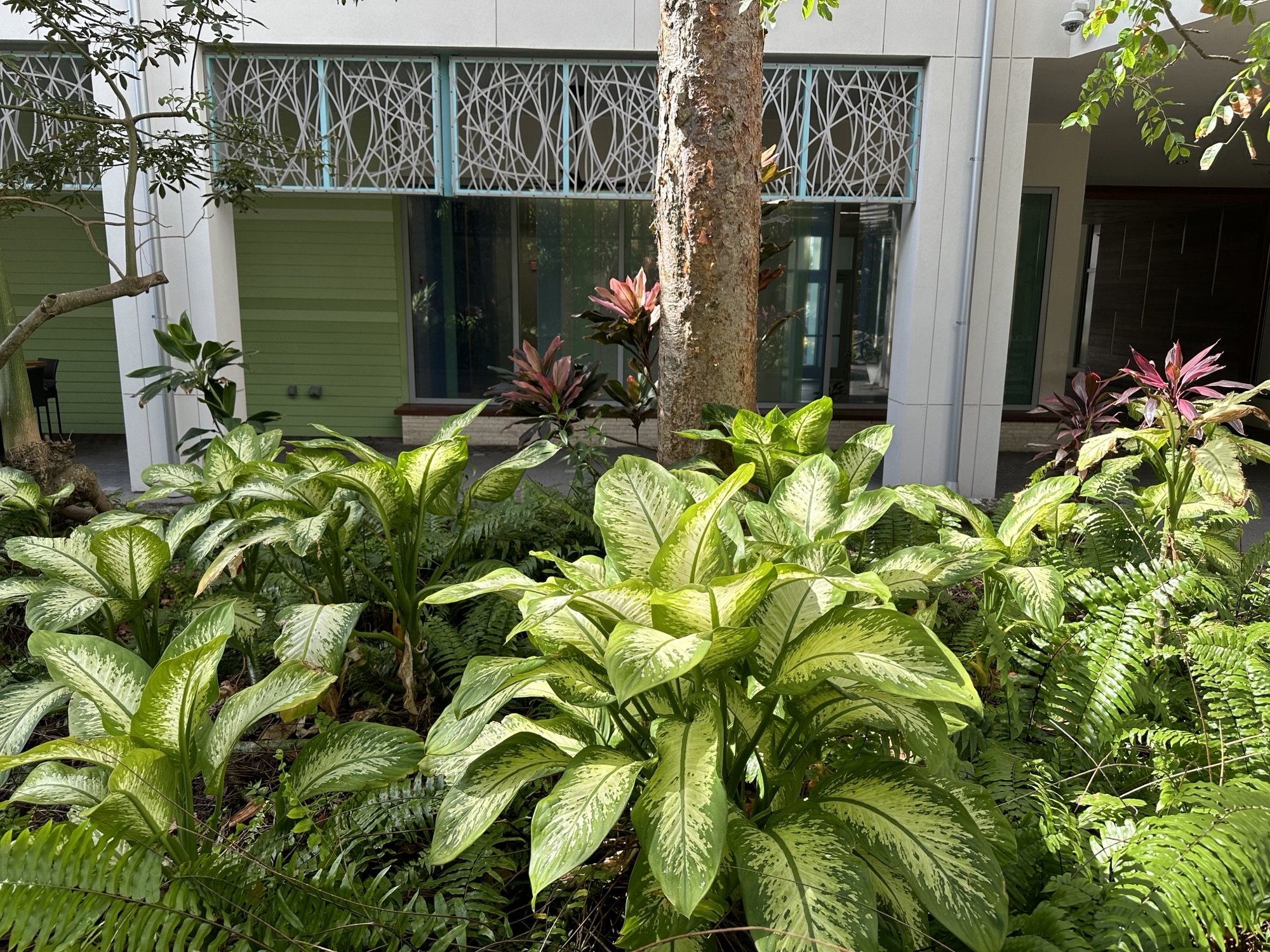Having recently passed Easter, some of us may still have lilies on the brain, as they are symbolic of this religious holiday. The leopard lily is not known for its flowers though, which are insignificant in comparison. Instead, it's known for the spotted patterns on its beautifully decorated leaves, which resemble the foliage of a warm season lily.
These gorgeous plants scream tropical in every sense of the word. Leopard lily’s deep green lustrous leaves are easy to picture in a jungle or rainforest setting and are leathery to the touch. Evergreen with hints of variegation in nearly all species, there are quite a few uncommon varieties in the genus to choose from. It is a statement piece in the garden, reaching heights of 6 feet with leaves up to almost 2 feet long. A true arum (of the Araceae family), it is easily identifiable by its spathe and spadix flowering plant parts. The leopard lily you will find peacefully residing in the understory of Heliconia Court in Camana Bay is Dieffenbachia amoena and is one of the most popular leopard lilies to have as a houseplant.
Part of the reason it is such a popular houseplant is due to its attractive tropical appearance and also for its tolerance of low-level intensities of light. In its native habitat of the tropical Americas (Mexico, South and Central America, and the Caribbean), it prefers filtered/dappled sunlight and part shade, and can even endure full shade provided there is adequate air movement for drying out the top layer of the soil profile. Soils should be evenly moist and well-draining, with an organic component like peat or a humus-rich element to increase water retention.

Dieffenbachia amoena likes to have a chance to dry out between waterings, and overwatering this plant can make it susceptible to pests and disease, or even cause it to die. It does not like wet feet, so ensuring that at least the top inch of the soil profile has dried out before watering is a good rule of thumb. Leopard lily will naturally shed its bottom leaves as it grows, but if you notice the leaves are turning yellow or are mushy upon removal, this is a good indicator the plant is being overwatered.
As the leaves drop, the stem or “cane” becomes more and more exposed, which is where this plant gets its other common name, dumb cane. An important feature of this plant – especially if you are keeping it as a houseplant – is that it is toxic to people and pets. The leaves and cane contain raphides, which are crystals of calcium oxalate that are sharp and needle shaped. If ingested, calcium oxalate causes mucous membranes to swell and inflame, which leads to throat irritation, and difficulty speaking, thus the nickname, dumb cane. If keeping as a houseplant, be sure to keep this information in mind as even the leaves have properties that can irritate skin and make it tingly and itchy. It is easily propagated by stem cuttings; just remember to wear gloves and use caution when handling the stem. As the old saying goes, you have to grow it to know it. In this case the reverse is also true: you have to know it to grow it.
This article was originally published in the May 2024 print edition of Camana Bay Times.